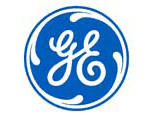What is small, compact, energy-efficient, and delivers hot water in an instant? A tankless water heater. The water heater is easily one of the most critical appliances in your home. Hot water is crucial for so many day-to-day tasks in our homes that we sometimes take for granted. We need hot water for cooking, cleaning, and showering, and some of us even heat our homes with it.
Before every home had a water heater, families boiled pots of water over an open flame. They moved them one-at-a-time to the bathtub until it was full—tank-type (or storage) water heaters developed in the 1860s in Pennsylvania. Although the radio, television and, automobile industries had flourished over the ensuing decades, water heater technology remained unchanged for close to one hundred years.
During the late 1990s, the tankless water heater began its prominence as the most requested new construction plumbing appliance. There are a lot of good reasons for the tankless water heater’s resounding popularity. With features like on-demand hot water, endless hot water, and increased efficiency over their tank-type cousins, tankless water heater installation is slowly gaining popularity in America and becoming the new standard.
How Do Tankless Water Heaters Work?
Tankless water heaters are also known as on-demand or instantaneous water heaters, they heat water directly, unlike traditional water heaters that store it. This demand-style water heater heats the water using either an electric element or a gas burner. It then directs the water needed in your home (i.e., washing machine, shower, dishwasher). With there being no need for a tank to replenish, you do not have to worry about running out of hot water. When the hot water tap is shut off, the unit senses that the water flow has stopped and shuts off the heating element.
How Are Tankless Water Heaters Different?
Tankless water heaters are efficient in all actual senses of the word, first in size. Traditional water heaters are a giant tank that always holds gallons of continuously heated water ready to be used. They typically require a tremendous amount of space, usually a minimum of 12 inches around it. It also needs a height clearance, and in some states, it needs to be placed on a raised surface, thereby occupying even more space. Newer tanks have grown larger as federal regulations have stipulated thicker insulation to reduce heat loss.
By comparison, a tankless water heater is much smaller, occupying 75% less space than its traditional tank cousin. It’s the size of a suitcase and can be mounted on the wall either inside or outside the home. It can be as small as 10″x7″ or as large as 20″x30″; it all depends on the size of the unit you choose. Additionally, they don’t require nearly the amount of clearance around them that a water heater would.
Energy tankless water heaters are far more efficient than their ancestors, simply because they lack the need to keep a giant tank of water hot.
Tankless water heaters employ what is called an “on-demand” hot water system. When you activate a hot water tap in your home with a tankless water heater, only the water you are currently using is heated.
These water heaters offer significantly increased efficiency as they are not required to keep a forty-gallon tank full of water hot twenty-four hours a day. Since your tankless water heaters can produce hot water “on-demand,” it is only heating the water you are currently using. When you turn off the hot water tap, the tankless water heater stops heating water, reducing your energy costs.
When installed and maintained correctly, tankless water systems are known to last over twenty years. That is more than double the average lifespan of a traditional water heater. Many manufacturers offer warranties of up to fifteen years for their products, with one company, Noritz, offering a twenty-five-year warranty on some models.
They’re easy to winterize. If you’ve ever owned a vacation home, you know how long it takes to drain the water from your hot water tank before you close up for the season. A high-efficiency tankless version only takes a few minutes to drain, and then you unplug it, and you’re ready to go.
They are reliable, far less likely to fail, and safer. When traditional water heaters break down, you usually hear stories of catastrophic flooding in your house, thanks to spilling gallons of water in your home if they spring a leak. That can damage walls, flooring, other appliances, and cost thousands of dollars of repairs. Also, due to the fact, the air-supply and exhaust vents are sealed, there is the potential that carbon monoxide can leak into the house due to back drafting.
What Is The Cost Of A Tankless Water Heater?
The cost of a tankless water heater is twofold. It can vary greatly depending on the heater model and its features, capacities, and then installation.
When considering the cost of this type of equipment, you need to take into account not only the water heater itself but the price of installation. Customers often neglect to consider the installation correctly, for example, when choosing a gas tankless water heater can cost considerably more than the original water tank. Installation costs are affected by the type of heater, the desired installation location, and the availability of adequate electricity or natural gas.
At Nick’s Plumbing, we offer our customers a selection of some of the best electric and gas tankless water heaters currently on the market. The price of the units from, $4,000-$8,500, and that includes the installation electric or gas model. Regardless of the model, the cost of repair will cost between $170-$450. While depending on what is needed to be repaired or replaced, parts can cost anywhere between $30-$400.
Signs You Need A New Water Heater Installed
Are your hot, relaxing showers not lasting quite as long as they used to? Have you noticed that your kitchen sink isn’t delivering hot enough water to clean your dishes? And what is that grinding noise coming from your water heater?
It sounds like you have a tank-type water heater that is nearing the end of its useful life. Now is the perfect time to consider an energy efficient, long-life tankless water heater installation in Houston.
Tank-type water heaters have a lifespan of seven to twelve years; and only those that have been properly maintained every year will make it to the high end of the age scale. Most of us never think about our water heater until we don’t have hot water, or worse, until we have forty gallons of warm water on our kitchen floor.
What To Consider Before Installation?
You’ve decided on a tankless water heater for your home, but before your plumber arrives at your door, there are a couple of things you need to consider.
If you’ve chosen a gas water heater, for the burner to perform correctly, it has to be hooked up to a gas supply line that delivers enough volume at sufficient pressure. Often that means the diameter of a standard residential supply pipe has to be increased to 3⁄4 inch. If the pressure drops, the gas company will have to adjust the regulator on the meter. Some tankless units, such as those made by Rheem, can work with a standard ½-inch gas line, provided it isn’t longer than 24 feet.
In the case of non-condensing tankless gas, heaters chose stainless-steel vents that can withstand high exhaust heat. Condensing units have more cooling exhaust and use less expensive PVC pipes. A concentric vent has an exhaust pipe inside a larger air-intake pipe, making installation a lot easier because only one hole needs to be cut in the wall. Usually, vent runs are limited to just 10 feet. But more powerful fans, like those in Rinnai’s Sensei series, now allow vents to run up to 150 feet.
The scale deposits that form on electric heating elements slow down heat transfer and thereby constrict water flow. If you’ve got a water-softening system in your home, then scale won’t be an issue. But if your water isn’t soft, and its hardness exceeds 120 milligrams per liter, then it is worth investing in a treatment system.
How Do I Install A Tankless Water Heater?
Whether you chose a gas or an electric tankless water heater, installing either one of them is best left to a professional like Nick’s Plumbing. The need for professional installation is because it involves leak-free, gas, and vent combinations in the case of gas on-demand water heaters, or upgrading the wiring and circuit for electric units.
What Are The Disadvantages Of Tankless Water Heaters?
Tankless or high-efficiency water heaters are expensive, considerably more than traditional ones. In many cases, piping must be extended or relocated, and for a gas unit, a safe vent must be installed to prevent carbon monoxide from building up inside the home. On-demand water heaters will save you money, but it often takes homeowners about 20 years to fully recuperate those expenses.
Contrary to popular belief, tankless does not mean instant hot water, and that is a misconception which surprises many buyers of this type of water heaters. It does not deliver hot water any faster to your tap than a traditional water heater. In truth, a tankless may be slower. That’s because it may take a tankless unit’s heating element to heat the water before delivering it to the tap.
An electric tankless water heater will not operate in a power outage. Compared to conventional water heaters, there isn’t any additional hot water supply sitting in a large 40-gallon tank accessible in an emergency. You’ll just have to take a cold shower.
All water heaters are susceptible to failure by hard water, but tankless units are especially vulnerable to this type of damage. To prevent this from happening, they should be entirely drained, and their filters should be replaced monthly. Additionally, they need to be flushed regularly. If these steps aren’t taken, hard water can destroy your water heater within a two-year timeframe. It can also void your manufacturer’s warranty.
What Size Of Tankless Hot Water Heater Do I Need? 
(diagram & mathematical information courtesy this old house)
The table above is how the professionals ensure your on-demand water heaters deliver enough hot water.
It takes a tremendous amount of energy for a tankless heater to warm cold water into hot water in just a few seconds. If demand becomes too high, you will start getting lukewarm water because your heater can keep up with it or cut back on the flow.
To determine if a tankless water heater will be able to meet your household’s needs, a plumber will look at the temperature of the water coming into the home, when is your household’s peak demand for hot water in gallons per minute (GPM), and the heater’s efficiency, as indicated by its Uniform Energy Factor, found in the product specs. The following are the steps a plumber must go through:
- A pro finds out how many Btus (British Thermal Units) per
gallon a heater needs to raise the incoming water to 120 degrees. - Next comes peak demand, the sum of the flow rates for
every appliance and fixture that could be using hot water simultaneously (those
rates are listed below). The total gets reduced by 20 percent since we
don’t bathe or wash in 120-degree water. You could also help reduce peak
demand by upgrading to low-flow fixtures and water-saving appliances. Or
by holding off on the washing when the shower is in use. - Calculating the total Btu output is done by plugging the
Btus-per-gallon and peak-demand figures into the formula. If that output
falls between two models, purchase the unit with the higher Btu rating.
And if it exceeds 198,000 Btus, the maximum for residential gas heaters,
you’ll need two smaller tanks that work together.
Rule-of-Thumb Sizing
In case you’re not interested in doing the math. Then you can use these figures to estimate how much heater output you’ll need.
1 bathroom, 1–2 people: 140,000 Btus
2 bathrooms, 2–3 people: 190,000 Btus
3 bathrooms, 3–5 people: 380,000 Btus
Fixture flow rates:
Showerhead: 1.25–2.5 GPM
Kitchen or bath faucet: 1.5–2.2 GPM
Tub filler faucet: 4 GPM
Dishwasher: 1–2.5 GPM
Washing machine: 1.5–3 GPM
To find the actual GPM of any fixture, time how many seconds it takes to fill a bucket to a 1-quart mark. Divide that by 15, the answer will give you your fixture’s GPM.
Do Tankless Water Heaters Need Maintenance?
When you have a professional plumber install an on-demand water heater such as Nick’s Plumbing Service, we will advise you to seek an annual service. That will include cleaning or changing water and air filters, as well as checking the burner.
In a residential area with hard water, a vinegar flush, every 500 hours keeps scaling, also known as a mineral build-up from clogging your heat exchanger. The flush can be performed by either us or you, the homeowner.
What Can Go Wrong with My Tankless Water Heater?
A tankless water heater doesn’t have many moving parts to cause mechanical failure, but there are some symptoms to look for that can indicate a need for tankless water heater repair in Houston. The pressure of your hot water may decrease, which suggests that mineral deposits may have built up in your heat exchanger. If these clog-causing deposits are not removed with regular maintenance, they will eventually cause the heat exchanger to corrode. Corrosion of the heat exchanger will cause leaks in your tankless water heater which can then also damage the electronic components of the water heater.
Depending on the type of tankless water heater you have, gas jets and electrical contacts need to be adequately maintained to ensure consistent firing. A failure in the gas supply or electrical circuits can result in a complete loss of hot water.
What Are The Latest Tankless Advances?
With high-efficiency tankless technology continually evolving and improving, it’s hard to keep up to date on the newest advances.
Firstly, today’s newest tankless units are taking approximately 15 seconds to bring water up to temperature. Yet you still have to wait for it to reach your shower head or faucet. Just as you would with a traditional tank, if the distance between your heater and your fixture is greater than 50 feet, you may want to consider buying a unit that features a recirculation pump, which saves water and reduces waiting time.
Secondly, condensing gas heaters currently on the market can extract up 96% of a fuel’s heat. These new heaters offer a 17% improvement compared to the first-generation’s tankless units. This improvement is due to the installation of a second heat exchanger.
Thirdly, tankless units are now Wi-Fi compatible. This means you can adjust the temperature and monitor gas and your hot water usage on your Smartphone. Even more impressive is if you have a problem with your tank, you can identify the source and relay that information to your plumber at Nick’s.
Installing Your Tankless Unit Outside
If hanging your high-efficiency tankless water heater outside is something you’ve never considered before, there are several advantages of installing a heater outdoors, if your climate and local codes permit can save you space. It is one less appliance you have to find room for inside. The built-in exhaust vent eliminates the need to cut a large hole through your house’s side by installing your high-efficiency outside. There is tremendous ease of access. Just think, if a plumber needed to get to it for a service call, you wouldn’t need to worry if you were home or not. They would only require access to the side of your home.
There may be a few drawbacks to having your high-efficiency water heater located outside your home. You may be required to seek formal permission from your local building department. Additionally, if you don’t live in a warm climate, having exposed water pipes may mean you’ll have to insulate or wrap them to avoid them from freezing.
Tankless Water Heaters
Yes, they are small, compact, efficient, and deliver hot water instantly. Still, there is a lot of information to read and understand about high-efficiency water heaters before selecting. As always, Nick’s Plumbing Service is here to help answer your questions and help you make the most suitable choice for you and your family.

























